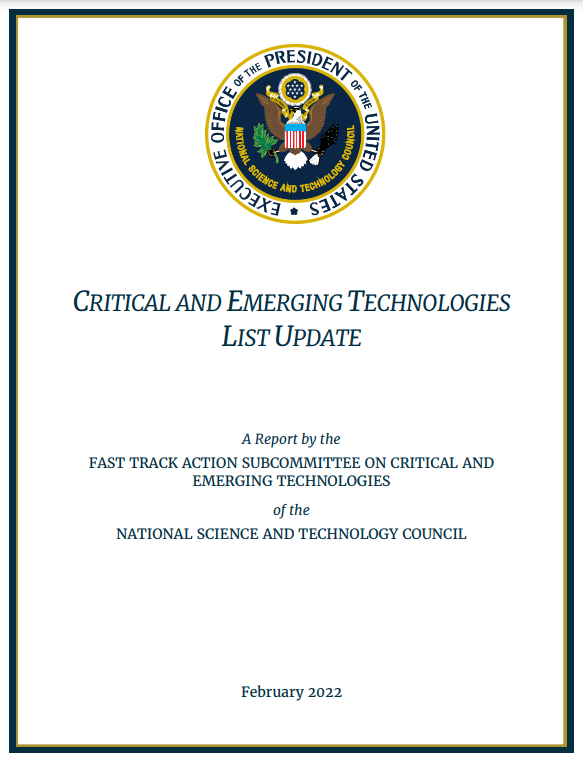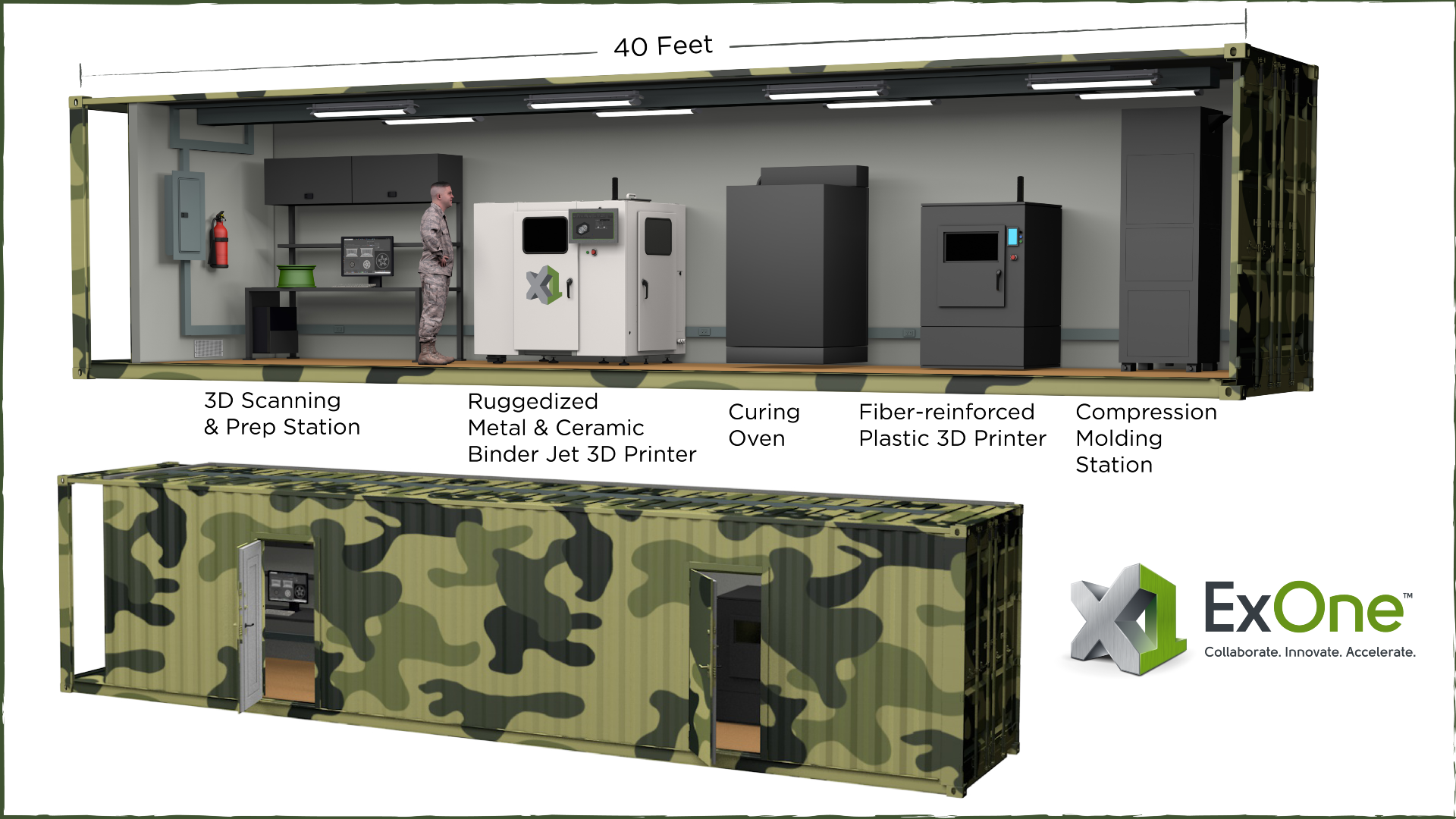The White House has included additive manufacturing within its updated list of critical and emerging technologies that are important to US national security.
The document builds upon the White House’s October 2020 National Strategy for Critical and Emerging Technologies released by then President Donald Trump, and will inform a forthcoming strategy on US technological competitiveness and national security, in addition to potentially informing future efforts to prioritize the technologies named.
The list was compiled by the US Office of Science and Technology Policy (OSTP) via a deliberative process involving the National Science and Technology Council (NSTC) and the National Security Council (NSC).

Identifying critical and emerging technologies
While the updated list isn’t to be interpreted as a priority list for either policy development or funding, it does give a telling indication of the areas the US is focusing on to bolster its national security. US departments and agencies may also consult the list when developing initiatives to research and advance technologies that support national security missions.
To create the list, a NSTC subcommittee was formed of 18 subject matter experts from government departments, agencies, and offices who identified critical and emerging technology subfields that may be critical to US national security over the course of a year.
One of the subfields identified was advanced manufacturing, with additive manufacturing named under this heading. Also included under the advanced manufacturing umbrella were sustainable manufacturing, smart manufacturing, and nanomanufacturing.
Not only was additive manufacturing included on the list in its own right, but it is also contributing to several other emerging technology fields identified in the document, such as advanced engineering materials, autonomous systems and robotics, biotechnologies, communication technologies, renewable energy generation and storage, space systems, and semiconductors and microelectronics.
While the deployment of 3D printing in some of these areas is still in its infancy, the technology is promising for a wide range of applications and R&D opportunities in many of the identified fields. The inclusion of additive manufacturing in the document, as well as the identification of the technology fields mentioned above, indicates the growing potential for the technology to help the US meet its national security objectives.

Bolstering US national security with 3D printing
In February last year, the US Department of Defense (DoD) unveiled its first official additive manufacturing strategy which aims to establish a common vision for the use of 3D printing within the nation’s defense program. Despite cybersecurity concerns raised by an independent watchdog, the DoD plans to roll out 3D printing across the country’s military, in particular highlighting the technology’s potential to reinforce its armed forces’ supply chains.
Last year also saw binder jet 3D printer manufacturer ExOne awarded a $1.6 million contract to develop a portable 3D printing factory for the DoD which could provide spare part production capabilities for troops in the field. Shortly after, additive manufacturing data specialist Senvol received a fresh round of funding from the DoD to develop its Senvol ML machine learning software, and has previously received a contract to design and qualify 3D printed components for use on missiles.
Meanwhile, in October industrial 3D printer manufacturer Stratasys developed its new data security platform, ProtectAM, specifically designed to enhance the cybersecurity of 3D printing for US government and mission-critical defense applications. The firm was also awarded a $20 million contract to supply the US Navy with up to 25 F900 3D printers over the next five years in a bid to shorten the military’s supply chains and provide it with enhanced aircraft repair capabilities.
Just last week, particle-free metal ink producer Electroninks received investment from In-Q-Tel, the strategic investment arm of the US Intelligence community founded by the CIA, which will help the firm deliver its particle-free conductive inks at scale to its government and commercial partners. With a previous DoD contract already under its belt, the firm’s electronics 3D printing capabilities have clearly captured the attention of the department, which is providing up to $154 million worth of investment elsewhere to fund the development of 3D printed electronics to support military operations.
Subscribe to the 3D Printing Industry newsletter for the latest news in additive manufacturing. You can also stay connected by following us on Twitter and liking us on Facebook.
Looking for a career in additive manufacturing? Visit 3D Printing Jobs for a selection of roles in the industry.
Subscribe to our YouTube channel for the latest 3D printing video shorts, reviews and webinar replays.
Featured image shows The White House has updated its Critical and Emerging Technologies list.


